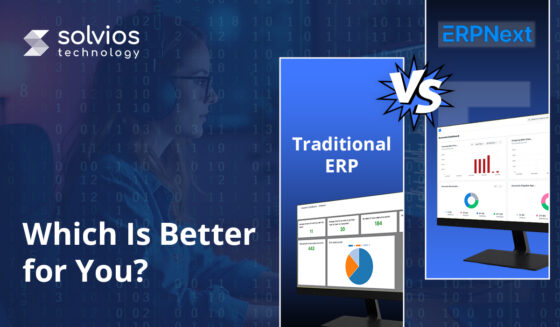
RingCentral App Integration to Salesforce empowers all individuals from the sales group to accomplish their objectives with the top-tier RingCentral Salesforce Integration.
Among the numerous features that exist in the combination the most as of late dispatched include quite possibly the most wanted features by our users, which is the In-App calling usefulness based on the WebRTC technology.
In-App calling empowers the users to use the RingCentral CTI connector as a total communication endpoint accordingly empowering them to answer calls, hold, quiet, move, and so on directly from the salesforce application without the requirement for an external desktop application to be installed.
This blog will take you through how to empower In-App calling and how to use every one of its capacities.
Understanding the Integration
Bringing RingCentral and Salesforce together turns every call, text, or video meeting into usable CRM data, without extra tabs or manual entry. The result is cleaner records, faster responses, and a clearer view of pipeline health.
What is RingCentral?
RingCentral is a popular AI communication partner for business owners. It facilitates SMS, calling, and video meetings to maintain seamless connectivity throughout your operations.
What is Salesforce?
Salesforce is among the top CRMs to manage leads, opportunities, accounts, and service cases. It helps business owners centralize different aspects of their operations, from reporting to service and marketing.
Benefits of Ringcentral Integration with Salesforce
1. Streamlined communication channels:
Place and receive calls, SMS, and video directly inside Salesforce. Click-to-dial, screen pop, and automatic call logging eliminate app-switching.
2. Centralized customer data:
Call notes, recordings, and outcomes attach to the right lead, contact, account, or case. Every interaction lives alongside emails, meetings, and tasks.
3. Improved customer service and support:
During the contact, agents may see the customer’s history. This helps executives understand the situation and provide immediate answers, which in turn improves customer service.
4. Improved sales and marketing alignment:
The results of the calls are shown in real time on a single dashboard. It enables you to modify current campaigns, enhancing targeting and follow-ups, which in turn will lead to more sales over time.
Prerequisites for Ringcentral Salesforce Integration
Salesforce Requirements
You need an account with admin rights to install and set up the package if you want to connect Salesforce and RingCentral. Having access to this kind of account lets you set up the ringcentral integration and assign roles to people.
You might also want to make sure that your Salesforce has API access. It allows you to access the Salesforce AppExchange and install the RingCentral package.
RingCentral Requirements
Similarly, to initiate ringcentral integration with salesforce, you need to have similar admin-level access. The ringcentral salesforce integration setup allows you to enable the Salesforce app, set rules, provision users, and extensions.
Once done, it’s time to verify individual users over a RingCentral digital line. This way, you’ll be able to set up RingCentral with Salesforce.
Technical Requirements
Use a supported, up-to-date browser (Chrome, Edge, or Firefox) on desktops that meet standard business specs. Give the required access to enable calls and SMS and ensure proper firewalls between Salesforce and RingCentral. Additionally, it’s also suggested to keep a stable internet connection and required bandwidth.
Step-by-Step RingCentral Salesforce Integration Process
Step 1: Install the RingCentral for Salesforce App
Via AppExchange
- Open the Salesforce account once you’re in AppExchange. Type “RingCentral for Salesforce,” and click on it to proceed.
- Finalize the install by selecting ‘Install for Admins Only.’ It helps you select the version with admin rights.
Via RingCentral Website
- Sign in to the RingCentral Admin Portal with admin rights and open the integrations gallery.
- Select Salesforce, click Connect, and authorize with your Salesforce admin account.
- Pick which users or extensions should use the app; you’ll finalize setup back inside Salesforce.
Step 2: Configure RingCentral Salesforce Integration Settings
Authenticate Accounts
In Salesforce, go to Setup > Installed Packages > RingCentral > Configure and sign in to RingCentral when prompted.
Set Up Call Center
To set up the central stage, click on ‘Call Centers’ under setup and review or import the RingCentral Call Center. Add your pilot users to this Call Center and add the Open CTI Softphone to your Lightning apps (via Utility Items) so the dialer appears. Adjust softphone layouts to control screen pops and default logging.
Customize Features
Under the phone fields section, choose click-to-dial, it helps you set auto call logging (who/what relation, subject format, dispositions). If your plan includes recording or voicemail, you can find it under the activity record section.
Step 3: Test Your RingCentral for Salesforce Integration Setup
Conduct Test Calls
Run a demo call and check where the calls get routed and information gets placed. Navigate your demo calls by running trials via Sandbox, it allows you to see where the call intent is registered and how it appears under the Task/Activity area.
Verify Data Sync
Open the record that goes with it and look at the Activity timeline for the start and finish times of the call, the duration, the disposition, and any recording link. If SMS is turned on, send a test message and check to see if it is logged where it should be.
Check permissions, Call Center assignment, and browser or network settings to fix anything that isn’t working. It should log under the Task/Activity section while displaying the correct contact or account.
Looking to connect RingCentral with Salesforce?
Contact our team now.Key Features Post-Integration
Choose “Calling” type as “browser” from the settings menu
With the calling typeset, the users are prepared to utilize the In-App calling abilities.
When you enable the calling type to “browser” you will be incited to concede admittance to your microphone. Click on “allow” to empower the webphone enlistment and you are good to go to utilize the In-App calling feature.
You would now be able to choose the From Number to set your guest id on outbound calls
This assists in choosing the outbound guest id number. Every one of the numbers related to your record is accessible in the “From” number dropdown. This is useful explicitly for the BDRs inside the business association to arrive at possibilities utilizing their local area code.
With In-application calling users would now be able to deal with their calls from inside the RingCentral Integrations in the Salesforce app. The entirety of the key call controls like hold, mute, transfer, record, and so forth is accessible right from the RingCentral App inside Salesforce.
Access to all call controls from the RingCentral Salesforce Integration
You can consistently oversee calls and simultaneously take notes and log disposition without leaving the application.
With the improvements in the most recent variant dealing with, multiple calls are a breeze. You can decline a call and keep on focusing on logging the current call. Then again, you have the choices to require the current call to be on hold or end it and answer a more significant incoming call and still hold and log practically everything for the two calls.
Deal with different calls with a single click focus on primary calls
You can log any unlogged calls from the call history. You can demonstrate unlogged calls with a red dot in the call history.
View call log status and make key moves from call history
The greater part of the users on RingCentral With Salesforce utilizes various tabs to perform multiple tasks to expand their profitability. With the In-App calling feature, we made it simple to be more beneficial and deal with your numerous settings consistently for RingCentral Contact Center Integrations.
You would now be able to deal with your calls from any tab as you explore between tabs. Additionally, calls started or answered from any tab are consequently changed to a solitary tab in this manner, liberating you to close undesirable tabs and letting you coordinate and be effective.
RingCentral has made it consistent for our users to have the option to deal with their calls to any device. We expand the force of overseeing approaches that go inside Salesforce integration and allow users to switch their RingCentral calls to any gadget to our application in Salesforce. You can change the call from the dynamic call list inside the RingCentral for Salesforce App.
You can utilize the green symbol in the dynamic call rundown to change calls from another device.
The In-App calling feature can be enabled by installing or moving up to the most recent rendition of the RingCentral for Salesforce integration from the RingCentral App Gallery or from the Salesforce AppExchange. Kindly allude to the administrator guide and user guide additionally accessible on the RingCentral App Gallery or the Salesforce AppExchange page for additional subtleties.
RingCentral and Salesforce Integration: Best Practices for Success
Regularly Update Software
Keep both platforms current. Install RingCentral and Salesforce updates after reviewing release notes in a sandbox first, then promote to production during a planned window. Updates often include security fixes, CTI improvements, and new logging options that reduce manual work.
Train Teams
Teach users how the dialer, screen pop, call logging, and SMS actually fit into their day. Provide short, role-based guides (sales, service, admin) and a one-page “how to log calls in two clicks.” Record a 10-minute walkthrough and pin it in Salesforce.
Monitor Performance
Watch the plumbing, not just the phone. Track call-log creation rate, average handle time, CTI load times, softphone errors, and SMS delivery status. In Salesforce, run weekly reports on Activities created by RingCentral. In RingCentral, review analytics for connection quality and failure codes.
Common Issues and Solutions for RingCentral Salesforce Integration
Authentication Errors
If the users are unable to log or sign in using their Salesforce or RingCentral credentials, chances are that the SSO/MFA policies have been altered. In such instance, it’s best to reauthorize the connection and link it to the correct domain to form a stable connection.
Check RingCentral and Salesforce status pages for outages. Additionally, you might also want to reset browser settings to ensure cookies are allowed. It often resolves the issue.
Data Sync Issues
Missed or misplaced call logs are generally caused due to fault in permission or mapping. If you come across such an issue, it’s best to verify the user profile and and check the field-level security. Additionally, you might also want to review the ‘Who/What’ protocol.
Check for limits and API connections, followed by a complete debug scan on Salesforce. It helps validate or trigger errors. Once done, you can easily simplify data sync issues across your operations with the right Salesforce consulting support.
Feature Malfunctions
If click-to-dial is absent, ensure that phone fields are included on the layout and that the Open CTI Softphone is added as a Utility Item in the Lightning app. Additionally, you might also want to get a clear view of the layout settings to check out the inbound and outbound formats.
In case you miss the recording or voicemail links, chances are there’s some problem with the RingCentral plan or the feature settings. Besides, if you’re unsure about the problem in hand, it’s best to consult with an expert to guide you.
Conclusion
Integrating RingCentral with Salesforce is critical for boosting your team’s interactions with clients. The RingCentral for Salesforce app is the primary tool for this connection, allowing users to initiate calls, plan meetings, and send SMS directly from Salesforce.
All these features make RingCentral x Salesforce a powerful integration for your business. Therefore, if you’re planning to leverage the possibilities of a platform that improves your team’s interactions with clients – we’re ready to help.
Schedule a meeting with our RingCentral Consultant
Contact us NowTags
Related Blog
Want to get started with App Development?
These applications are acquiring enormous prevalence by offering hands-on enterprise mobility solutions for organizations around the globe.
Start A Conversation
















